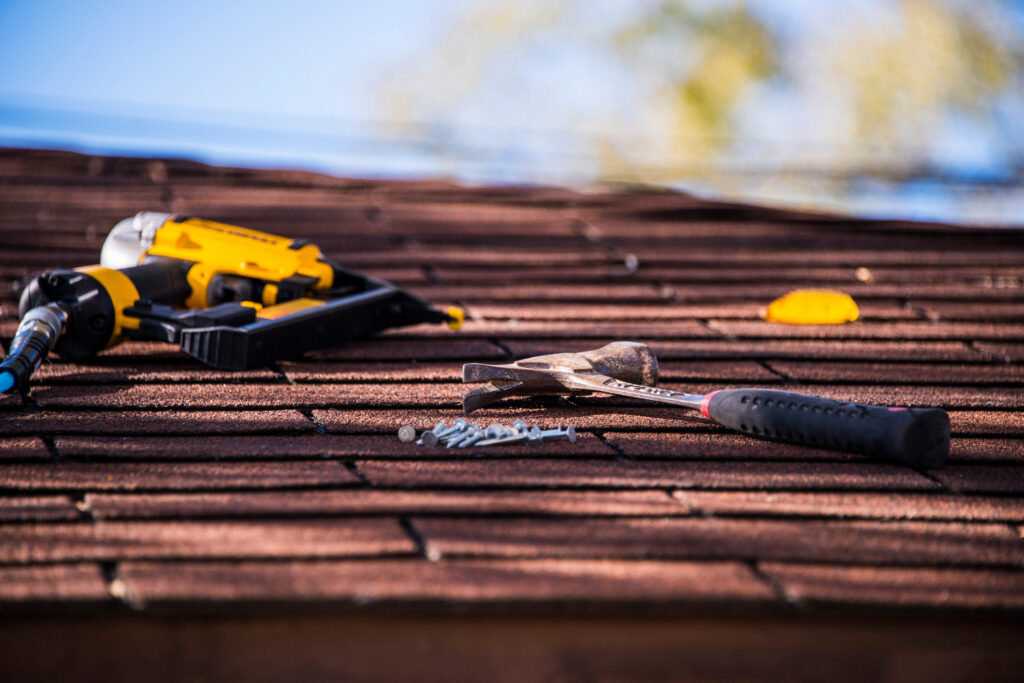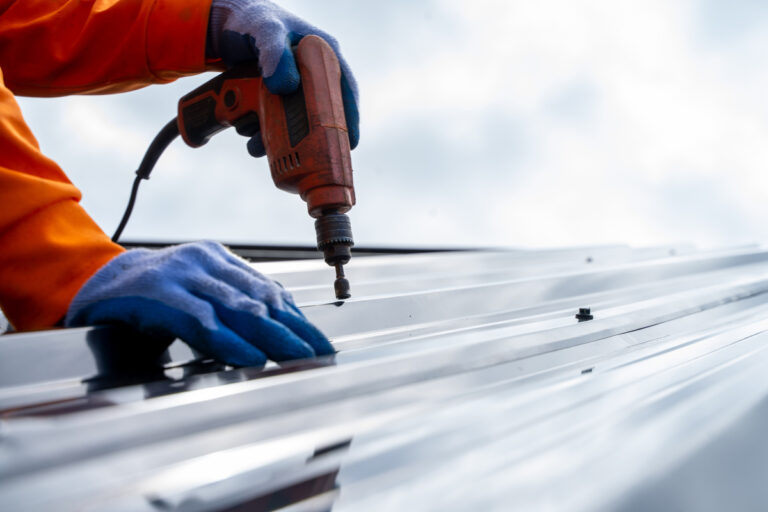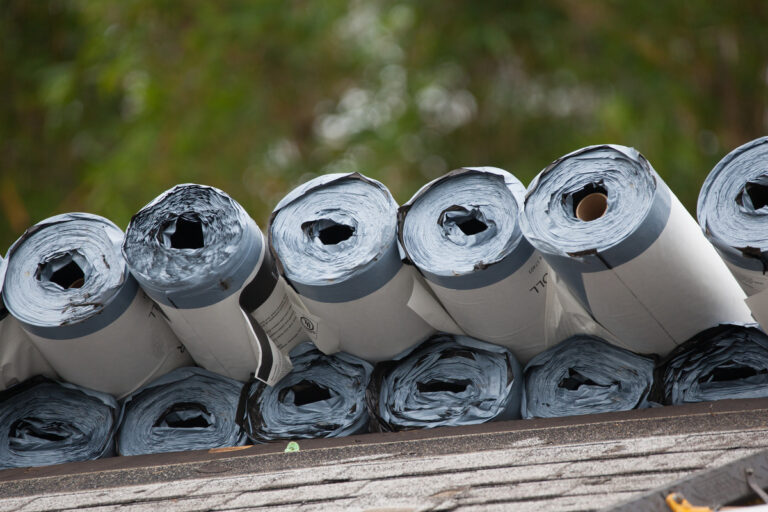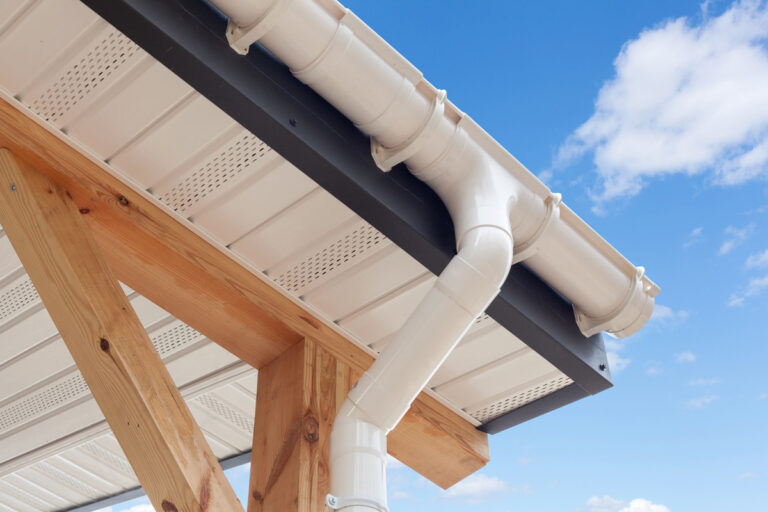Shingle Roof Repair Guide for 2024
May 13, 2024
Shingle Roof Repair Guide for 2024
If you’re searching for “shingle roof repair“, chances are you require prompt, reliable solutions for fixing your damaged roof. This guide will walk you through everything you need to know to get your roof in tip-top shape.
Inside this blog:
- Spotting Missing or Damaged Shingles
- Preparing for Shingle Roof Repairs
- Step-by-Step Shingle Replacement Process
Spotting Missing or Damaged Shingles
Identifying roof damage begins with spotting missing or damaged shingles. A missing shingle on the roof is evident as it will show as a gap, disrupting the uniform pattern similar to a missing piece in a jigsaw puzzle. You can safely use binoculars to conduct a preliminary survey of your roof for damaged shingles without needing to walk on it.
Shingles in good condition should:
- Lie flat against the roof, including the surrounding shingles
- Not have any visible signs of damage or wear
- Have intact granules
- Not have any cracks or curling
If the roof is older and granules are noticed in the gutters, this is a sign that the shingles are deteriorating and may require replacement.

Detecting Leaks and Water Damage
Following a significant weather event like heavy rain, hail, or windstorm, it’s crucial to conduct a roof inspection to detect any leaks or water damage. Water damage could compromise the roof structure, leading to more serious issues down the line.
Regular inspections not only help identify potential problems early, but also give you peace of mind knowing your roof is in its top condition.
Assessing the Extent of Roof Damage
Before starting any repairs, it’s essential to assess the extent of roof damage. It’s critical to understand:
- How many shingles need replacement
- What supplies will be necessary
- Whether there are any skylights or openings that could present hazards during the repair process
Assessing your roof’s structural integrity ensures that there are no potential safety issues. Remember, a total roof replacement is typically unnecessary unless a significant portion of the roof, including metal roofs, is compromised.
Preparing for Shingle Roof Repairs
Once the need for repair is identified, it’s time to gear up for the process. Preparation includes ensuring safety, gathering the necessary roofing materials, and organizing the tools required for the job.
Safety First: Roof Repair Precautions
Safety should always be your top priority when conducting roof repairs. Wearing non-slip footwear, gloves, and eye protection is indispensable to prevent injuries. Installing guardrails and other fall protection systems such as harnesses can reduce the risk of falling off the roof.
Also, ensure that your ladder is secure and have someone assist at the base to prevent accidents before stepping onto the roof.
Gathering Necessary Roofing Materials
Following safety measures, it’s time to gather the necessary roofing materials. If you have leftover replacement shingles at home, you can avoid unnecessary purchases. If you need additional materials, you can find them at home improvement stores or lumber centers.
Remember, to maintain visual consistency on the roof, you can relocate shingles from less visible areas to replace more visible damaged ones.
Organizing Tools for the Job
Lastly, organize your tools. Fundamental tools required for shingle roof repairs include:
- Hammer: used for driving nails to secure new shingles and remove nails from damaged shingles
- Flat pry bar: essential for carefully lifting shingles without causing additional damage, allowing for nail removal and shingle replacement
- Hook blade: specifically designed for making precise cuts in shingles, ensuring a proper fit during repairs

Step-by-Step Shingle Replacement Process
Let’s now proceed with the step-by-step shingle replacement process. This will involve removing the damaged shingle, positioning the new shingle, and securing it.
Removing the Damaged Shingle
The replacement process begins with the removal of the damaged shingle. To begin, slide a putty knife under the shingle to break the seal holding it in place. After breaking the seal, careful use of a flat bar helps to pry up the shingle without damaging the one above.
With the shingle pried up, extract the roofing nails with the flat bar to completely free the shingle from the roof.
Positioning the New Shingle
With the damaged shingle removed, the next step is to position the new shingle. Sliding it under the shingle directly above ensures full coverage and protection.
Always ensure that the new shingle or shingle tab aligns properly for optimal protection.
Securing the Replacement Shingle
Securing the new shingle concludes the replacement process. Follow these steps to secure the shingle:
- Use 7/8” roofing nails to secure the shingle onto the roof.
- Once the shingle is nailed down, lift the tab to apply a dab of roof cement.
- Bond the shingles together and to the roof surface.
When to Call a Roofing Contractor
Though some repairs can be executed independently, certain situations call for professional intervention. Complex repairs and risk to your home’s structural integrity are two main reasons to consider hiring a roofing contractor.
Comparing DIY vs. Professional Repair Costs
It’s also important to compare the costs of DIY repairs versus professional repairs. While DIY repairs might seem cheaper, they can sometimes lead to more expensive problems in the long run.
On the other hand, professional repairs can be efficient and potentially save money by avoiding further costs that might arise from DIY repair attempts.
Estimating the Cost of Shingle Roof Repairs
When planning for roof repairs, cost is a significant factor to consider. Knowing how to estimate the cost can help you budget accordingly and avoid unexpected expenses.
Factors Influencing Repair Costs
The cost of roof repairs can be influenced by several factors, including:
- Labor costs
- The extent of roof damage
- The type and quality of materials used
- Roof accessibility
All of these factors play a role in determining the final bill.
Get Comprehensive Roof Repair Services
Shingle roof repair is a vital skill for homeowners. Although DIY repairs can be cost-effective for minor issues, professional help is essential for complex repairs and maintaining the overall structural integrity of your roof. So, when you need roof repair services, reach out to your local pros at Roof X!
We’ll ensure that your roof is adequately repaired.




